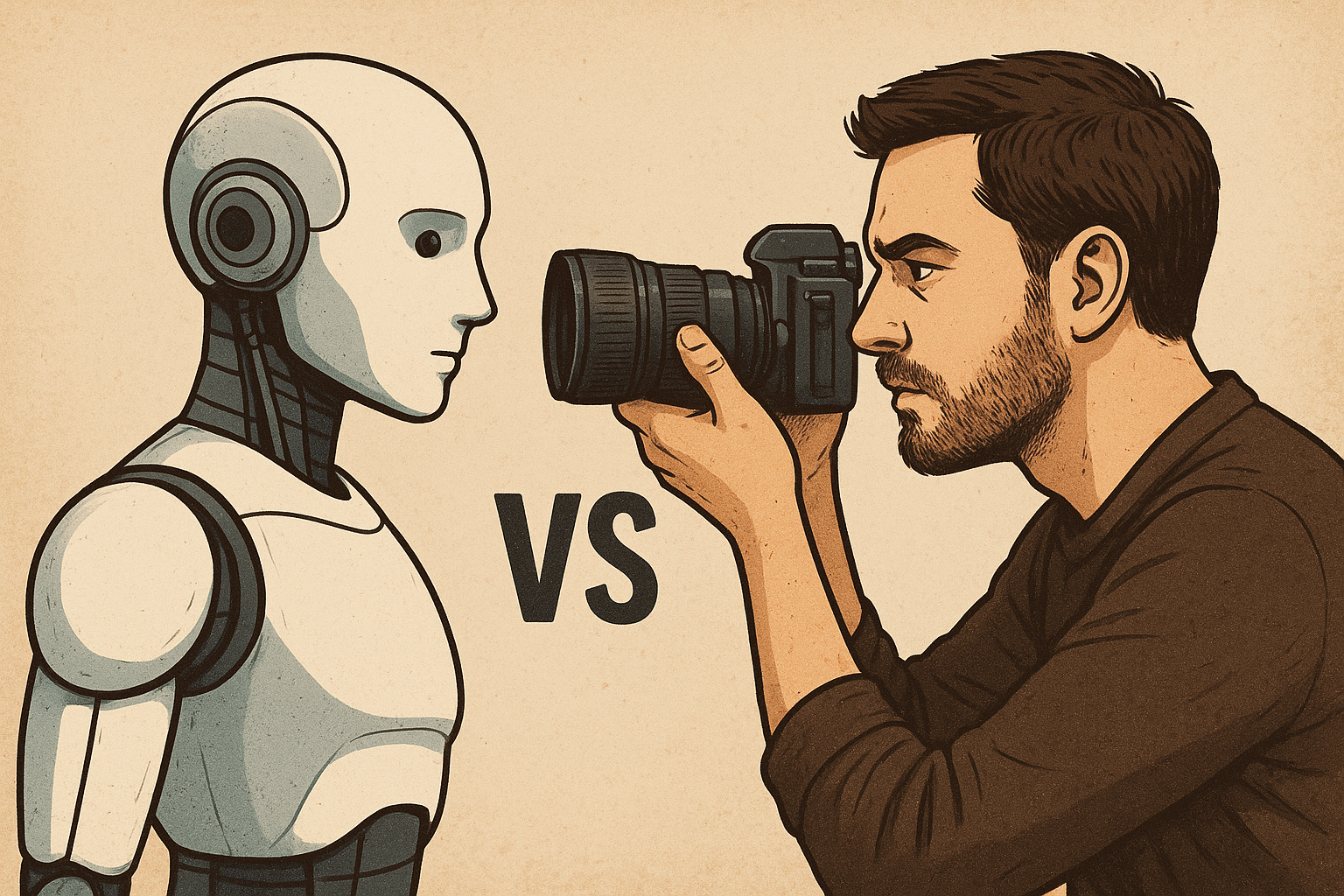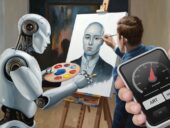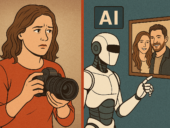
In an age where artificial intelligence is advancing at lightning speed, many industries are being reshaped. Photography is no exception. AI tools can now generate realistic images from text prompts, enhance photos with a single click, and even mimic certain artistic styles. Yet, despite these impressive capabilities, AI has not—and cannot—replace the role of professional photographers. Photography is more than producing a technically perfect image; it is about storytelling, emotion, and human connection.
1. The Human Vision Behind the Lens
Photography is not just about pointing a camera and pressing a button. A skilled photographer brings years of experience, an eye for composition, and an instinct for capturing moments that truly matter. The subtle play of light and shadow, the framing of a subject, or the anticipation of a fleeting expression—these are choices rooted in human intuition. AI can generate images, but it cannot anticipate a child’s laughter during a wedding or the quiet dignity in a portrait of an elder.
2. Authenticity and Trust
In a world saturated with digital manipulation, authenticity has become more valuable than ever. Clients hire photographers not just for images, but for truthful documentation—be it for weddings, events, journalism, or commercial work. A photograph taken by a professional carries credibility and trust that AI-generated content simply cannot replicate. Consumers and businesses alike still rely on the integrity of real images to convey honesty and transparency.
3. The Emotional Connection
Great photography does more than show what something looks like—it makes us feel. The smile in a family portrait, the tension in a sports shot, or the intimacy of a candid street photo are powerful because they capture real human emotions in real time. AI may imitate these scenes, but it cannot experience them. Only a photographer who is present, empathetic, and responsive can translate lived moments into lasting visual memories.
4. Creative Collaboration
Professional photographers work closely with clients to understand their vision and translate it into imagery. This collaboration involves communication, adaptability, and creativity that no algorithm can replicate. Whether it’s guiding a nervous subject in a studio or adjusting on the fly during an outdoor shoot, photographers bring a human touch that ensures the final result reflects not just technical quality but also personal meaning.
5. Beyond the Image: Craft and Expertise
Photography is also a craft. From mastering equipment and lighting to understanding the psychology of subjects, photographers offer expertise that shapes the outcome in ways AI cannot. Moreover, post-production editing requires judgment and artistic sensibility to maintain authenticity while enhancing visual impact. These skills stem from human taste, not machine calculation.
Conclusion
AI is a powerful tool, and in many ways, it has expanded the possibilities of image creation. However, it is not a replacement for photographers—it is a complement. While AI can generate or modify images, it lacks the human vision, emotional depth, and authenticity that make photography meaningful. The work of photographers will remain essential, not only for creating visually striking images but also for preserving truth, memory, and human experience.
In short, photography is not merely about images—it is about people. And no matter how advanced technology becomes, that human element will always be irreplaceable.


